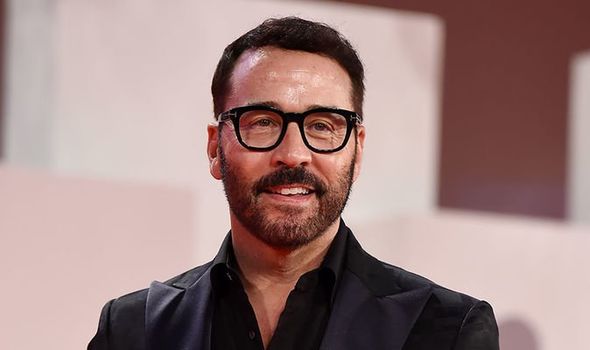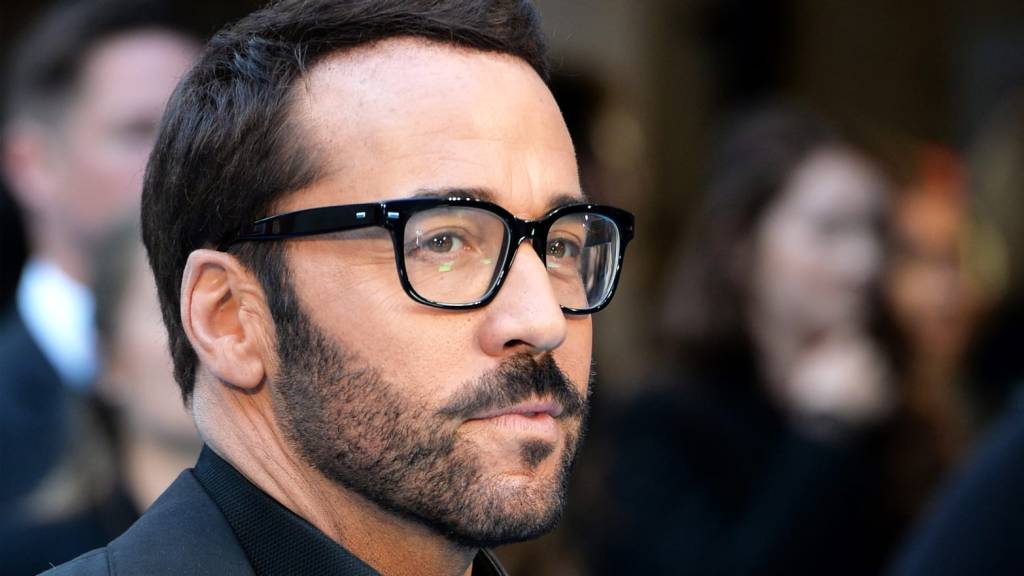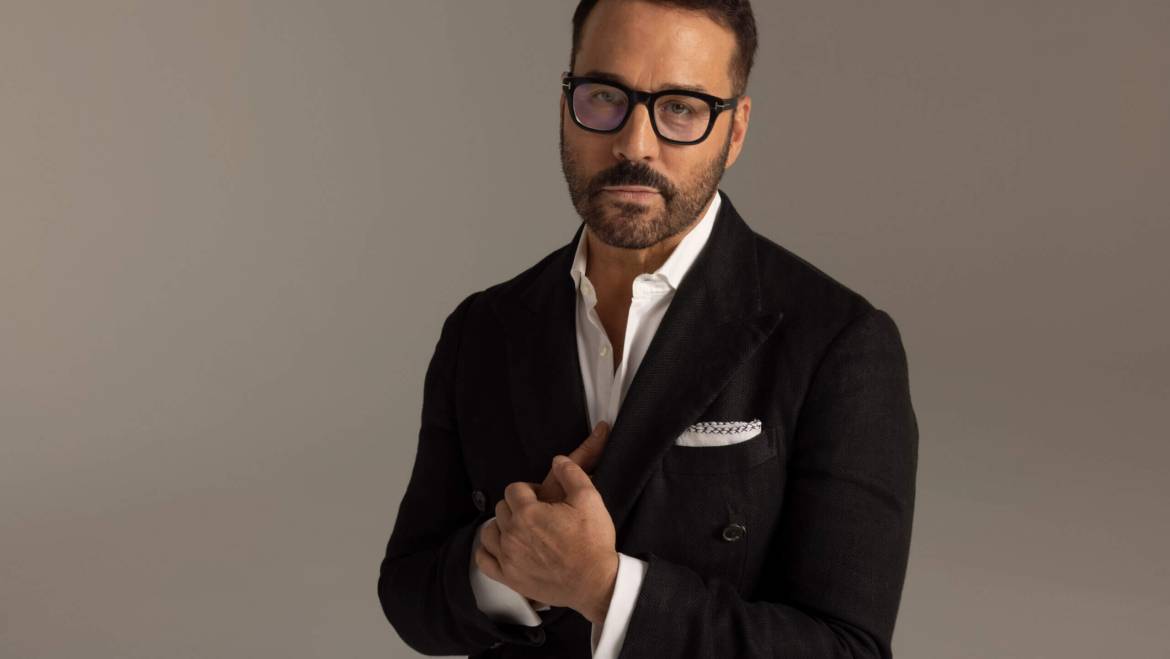Jeremy Piven, known for his roles in hit comedy series such as “Entourage,” has been the subject of much speculation regarding his luscious locks. Many have questioned whether his head of hair is a result of natural growth or perhaps the work of hair transplant procedures. In this article, we will delve into the details of Jeremy Piven’s hair transplant, exploring what you need to know about this controversial topic.
Hair loss issues affect countless individuals, and Piven’s alleged hair transplant has sparked a debate surrounding the use of artificial hair pieces versus the restoration of natural hair. By examining Piven’s experience, we hope to shed light on the different types of hair transplantation and reveal the secrets behind his beautiful hair.
Join us as we navigate through the rumors, discuss the gold standard of hair restoration treatment, and explore alternative hair loss solutions. Whether you’ve been considering your hair transplant or are simply intrigued by Jeremy Piven’s follicular transformation, this article will provide you with valuable insights into the world of hair transplantation. Stay tuned as we unravel the truth behind Piven’s head-turning hair and the techniques that may have contributed to his success.
Who is Jeremy Piven?
Jeremy Piven is an American actor known for his work in film and television. He is best known for his role as Ari Gold in the comedy series “Entourage,” which earned him multiple awards. Piven has also appeared in various other television shows and movies, highlighting his acting abilities. In addition to his successful career in the entertainment industry, Piven has also made headlines for his alleged hair transplant procedure, which has sparked discussions about hair loss and restoration. His experience serves as an interesting case study into the world of hair transplantation and the options available for those facing hair loss issues.
Signs of Balding Head
A balding head can be easily identified by a few common signs. The most noticeable sign is thinning hair, which occurs when hair follicles start producing shorter and finer strands. Another common sign is hair loss in patches, where certain areas of the scalp have little to no hair growth. Additionally, a receding hairline, where the hairline begins to move further back on the scalp, is another sign of balding.
Hair loss can have a significant impact on individuals, not only physically but also psychologically. The physical symptoms include the thinning of hair strands and the gradual loss of hair from the scalp. These changes can greatly affect one’s appearance, leading to decreased self-confidence and feelings of aging. Many individuals experiencing hair loss may also feel self-conscious about their changing appearance, leading to emotional distress.
It is important to note that hair loss affects both men and women, although it is more commonly associated with men. Understanding the signs of a balding head can help individuals take proactive steps toward addressing their hair loss concerns. Seeking professional advice and exploring different hair restoration treatments can lead to positive outcomes and help restore confidence in one’s appearance.
Types of Hair Transplant
When it comes to hair loss issues, hair transplantation is often considered one of the most effective and long-lasting solutions. There are several types of hair transplant procedures available, each with its advantages and considerations. One common type is the strip method, where a strip of hair is removed from the back of the scalp and then dissected into hair follicles for transplantation. Another popular technique is Follicular Unit Extraction (FUE), which involves extracting individual hair follicles from the donor area and then implanting them in the balding areas.
Additionally, there are specialized methods such as the U-FUE, also known as the long-hair hair transplant, which allows individuals to maintain their long hair during the transplant process. It is essential to consult with a qualified professional to determine the most suitable type of hair transplant for specific needs and expectations. By understanding the different options available, individuals can make informed decisions to achieve the desired hair restoration results.

Hair Follicles and Hair Growth
Hair follicles are small, sac-like structures located in the skin that produce and grow hair. They are responsible for the continuous cycle of hair growth and shedding. Understanding how hair follicles function and the process of hair growth can help in better understanding hair loss issues and hair transplant procedures.
The hair growth cycle consists of three main stages: anagen, catagen, and telogen. During the anagen phase, which is the active growth phase, hair follicles are actively producing new hair strands. This phase can last anywhere from two to seven years, depending on various factors. The catagen phase is a transitional stage where hair growth stops, and the hair follicle shrinks. Finally, during the telogen phase, the hair follicle is at rest, and the old hair strand is pushed out to make way for new hair to grow.
Several factors can affect hair growth, including genetics, age, hormones, and overall health. Poor nutrition, stress, and certain medical conditions can also impact hair growth. Additionally, the shape and size of hair follicles play a crucial role in determining hair type and texture. Follicles that produce straight hair have an almost round shape, while follicles with an oval or elliptical shape produce wavy or curly hair.
Understanding how hair follicles function, the hair growth cycle, and the factors that can affect hair growth is essential when considering hair transplant procedures or dealing with hair loss issues. By addressing these factors, individuals can find suitable hair restoration treatments or seek alternative hair loss solutions to maintain beautiful hair and address any hair loss concerns.
Type of Hair Transplantation Used by Jeremy Piven
Jeremy Piven, known for his roles in comedy series such as “Entourage,” has been open about his decision to undergo a hair transplant to address his balding head. The type of hair transplantation used by Jeremy Piven is a strip harvest technique, also known as follicular unit transplantation (FUT). This procedure involves removing a strip of hair from the back of the head, where hair follicles are genetically resistant to balding, and transplanting it to the balding areas.
The strip of hair is carefully dissected into individual follicular units containing one to four hair follicles. These units are then transplanted into tiny incisions made in the recipient area. The goal is to create a natural-looking hairline and dense, full hair growth.
Harvesting techniques play a crucial role in minimizing donor scars. Skilled surgeons use techniques such as trichophytic closure, which involves overlapping the wound edges to promote hair growth through the scar line. This helps conceal the scar and create a more natural appearance.
Timing and patient selection are also important considerations. It is crucial to choose the right patient who has sufficient donor hair to achieve the desired results. Additionally, it is important to consider the patient’s age and progression of hair loss, as it can impact the long-term success of the procedure.
To ensure optimal healing and natural-looking results, techniques such as tumescence and two-layered closure are utilized. Tumescence involves injecting a solution into the scalp to minimize bleeding and discomfort during the procedure. Two-layered closure refers to stitching the deeper layers separately from the surface layers, allowing for optimal healing and minimizing the risk of visible scars.
Artificial Hair Piece/Wig
Artificial hair pieces, commonly known as wigs, can play a crucial role in addressing hair loss and balding. These hair replacement options are often used in conjunction with or as an alternative to hair transplantation for those who do not have sufficient donor hair or prefer a non-surgical solution.
Artificial hair pieces/wigs are typically made from either synthetic fibers or real human hair, providing individuals with the opportunity to achieve a natural-looking head of hair. These pieces are customized to fit the individual’s scalp and desired hairstyle, allowing them to regain their confidence and feel comfortable in their appearance.
One of the main advantages of using artificial hair pieces/wigs is their versatility. They offer a quick and easy solution for those who do not wish to undergo surgery or have limited donor hair. Additionally, they provide the flexibility to change hairstyles and experiment with different looks without any damage to one’s natural hair.
However, there are also some disadvantages to consider. Artificial hair pieces/wigs require regular maintenance, including cleaning, styling, and periodic replacement. They can also feel less natural compared to surgically transplanted hair. Furthermore, wearing a wig can cause discomfort or irritation, especially when not properly fitted or secured.
Bad Hair Transplants: What to Look Out For
A bad hair transplant procedure can have detrimental effects on one’s appearance and confidence. It is important to be aware of the warning signs and potential issues that may arise after undergoing a hair transplant.
One of the most noticeable warning signs of a bad hair transplant is an unnatural hairline. A poorly executed transplant can result in a hairline that looks too low, too straight, or too symmetrical for a natural appearance. Additionally, visible scarring is another red flag. If the donor area shows visible scars or if the transplanted hair appears patchy or thin, it could indicate a subpar transplant procedure.
Poor hair density is another symptom of a bad hair transplant. The goal of a hair transplant is to create thicker, fuller hair. However, if the transplanted hair does not achieve the desired density, it can result in an unsatisfactory outcome.
In such cases, corrective procedures may be necessary to address the issues caused by a bad transplant. This can involve further hair transplant surgeries or other treatments to improve hair growth and appearance.
Patchy Hair: How to Avoid It
Patchy hair is a common concern when undergoing a hair transplant procedure. It can occur due to various factors, including inadequate graft preparation, improper implantation technique, and an inappropriate choice of grafts for transplantation. These issues can lead to an uneven distribution of transplanted hair, resulting in patchiness.
To avoid patchy hair, it is crucial to select a skilled and experienced hair transplant surgeon. An experienced surgeon will have the knowledge and expertise to perform the procedure with precision and minimize the risk of patchiness. They will also be able to assess the patient’s hair loss pattern and recommend the most suitable transplantation technique.
Choosing the appropriate transplantation technique is equally important. Techniques like Follicular Unit Extraction (FUE) and Follicular Unit Transplantation (FUT) can yield natural-looking results when performed correctly. FUE involves extracting individual hair follicles from a donor area, while FUT involves removing a strip of hair-bearing skin for grafting. Both techniques require careful handling and placement of grafts to ensure even distribution and avoid patchy hair.
Proper post-operative care plays a significant role in preventing patchy hair. Following the surgeon’s instructions, such as avoiding excessive physical activity and properly caring for the transplanted area, is crucial for successful results. Regular follow-ups with the surgeon are also essential to monitor hair growth progress and address any concerns promptly.
Strip of Hair Transplantation Procedure
The strip of hair transplantation procedure is a commonly used technique in hair transplant treatments. This procedure involves making an incision in the donor area, typically located at the back or sides of the head, to remove a narrow strip of hair follicles. The donor area is chosen because it usually has a higher density of healthy hair follicles.
Once the strip of hair follicles is removed, it is carefully dissected into smaller grafts by the surgical team. These grafts typically contain one to four hair follicles each, depending on the specific needs of the patient and the desired outcome. The size and thickness of the strip may vary depending on the patient’s hair loss pattern and the amount of hair available for transplantation.
After the dissection process, the recipient area, which is the area where hair loss is to be treated, is prepared by creating small incisions or recipient sites. The grafts are then meticulously placed into these recipient sites by the surgeon. The goal is to ensure that the grafts are evenly distributed and positioned strategically to mimic natural hair growth.
The strip of hair transplantation procedure is favored by some surgeons because it allows for the harvesting of a significant number of grafts in a single session. However, it does leave a linear scar in the donor area, which can be covered by the surrounding hair.
Different Types of Hair Loss Issues That Can Be Treated with a Hair Transplant
A hair transplant procedure can be an effective solution for a variety of different hair loss issues. Whether it’s a receding hairline, thinning hair, or bald patches, hair transplantation can help restore a fuller and more natural-looking head of hair.
One common type of hair loss that can be treated with a hair transplant is male pattern baldness, also known as androgenetic alopecia. This condition is characterized by a gradual, predictable pattern of hair loss starting at the temples or crown and progressing over time. Hair transplant procedures can effectively counteract this type of hair loss by transplanting healthy hair follicles from donor areas to the areas experiencing thinning or balding.
Another type of hair loss issue that can benefit from a hair transplant is traction alopecia. This form of hair loss is often caused by excessive tension on the hair, such as tight hairstyles like braids or ponytails. By transplanting hair follicles to the affected areas, a hair transplant can stimulate new hair growth and help improve the overall density and thickness of the hair.
Hair transplant procedures can also be helpful for individuals with patchy hair loss due to conditions like alopecia areata, which causes unpredictable hair loss in localized areas. The transplanted hair follicles can help fill in the patches, resulting in a more even and consistent hair growth pattern.
Benefits of a Hair Transplant
A hair transplant procedure can provide numerous benefits for individuals experiencing hair loss. One of the main advantages is its effectiveness in treating male pattern baldness, the most common type of hair loss in men. By transplanting healthy hair follicles from donor areas to the thinning or balding areas, a hair transplant can restore hair growth and improve the overall appearance of the hair.
Additionally, hair transplants can also be beneficial for individuals with traction alopecia, a condition caused by tight hairstyles that result in hair loss. By transplanting hair follicles to the affected areas, a hair transplant can stimulate new hair growth and increase hair density. Another benefit of a hair transplant is its ability to address patchy hair loss caused by conditions like alopecia areata. By filling in the patches with transplanted hair follicles, a hair transplant can create a more even and consistent hair growth pattern.
Overall, a hair transplant can be a life-changing solution for individuals seeking to regain their confidence and restore a fuller head of hair.

Improved Appearance and Confidence Boost
Jeremy Piven hair transplant is a testament to the amazing benefits that can be derived from this procedure. A hair transplant can significantly improve one’s appearance, giving individuals a renewed sense of confidence.
One of the most remarkable aspects of a hair transplant is that it offers natural and permanent results. With advanced techniques, hair follicles are carefully extracted from the donor area and transplanted into the balding areas of the head. This allows for the growth of new hair strands that blend seamlessly with existing hair.
Hair transplantation is particularly suitable for individuals who have enough hair in the donor area, which is often the back or sides of the head. This ensures that the transplanted hair will have a strong foundation and continue to grow naturally.
The advantages of hair transplantation are numerous. Firstly, the procedure leaves minimal scarring, as hair follicles are extracted individually or in small groups rather than in a strip of hair. This makes the scars virtually undetectable. Additionally, the recovery time is relatively short, allowing individuals to resume their daily activities soon after the surgery.
Another advantage is the availability of different types of transplant procedures, such as the FUE (Follicular Unit Extraction) and FUT (Follicular Unit Transplantation) techniques. This allows for a customized approach to suit each individual’s needs and preferences.
Restoration Treatment for All Types of Natural Looking Hairs
A hair transplant is a highly effective restoration treatment for all types of hair loss issues, including a balding head, patchy hair, and strips of hair.
In the case of a balding head, hair transplantation can provide a permanent solution by implanting hair follicles in the bald areas. These follicles are carefully extracted from the donor area, usually the back or sides of the head, and are then transplanted into the balding areas. This allows for the growth of new, natural hair strands that blend seamlessly with the existing hair.
For patchy hair, where there are areas of thinning or gaps in the hairline, a hair transplant can restore a fuller and more uniform appearance. Hair follicles are transplanted to these areas, allowing for new hair growth and filling in the patches.
A strip of hair loss, often caused by scarring or injury, can also be effectively treated with a hair transplant. Hair follicles are extracted from the donor area and transplanted into the strip, promoting the growth of new hair and restoring a natural look.
Conclusion
In conclusion, the ongoing debate about Jeremy Piven’s hair secret, whether it be a toupee or a hair transplant, should not overshadow the importance of respecting his privacy. Regardless of his hair status, what truly matters is his confidence and comfort. We should focus on supporting individuals in their choices and promoting self-esteem, rather than scrutinizing their appearance. Jeremy Piven, like anyone else, deserves to feel confident and comfortable in his skin. Let us redirect our attention to celebrating his talents and accomplishments, rather than speculating about his hair. After all, it is not the presence or absence of hair that defines a person’s worth, but rather their character and achievements.
